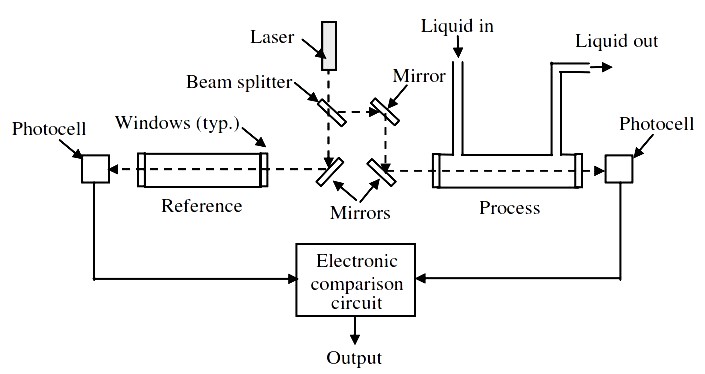A typical application for photodetectors in analytical measurement is as a turbidity analyzer. The cloudiness of a liquid, called turbidity, is caused by the presence of finely divided suspended material. Turbidimetric methods involve measuring the light transmitted through a medium.
Turbidity can be caused by a single substance or by a combination of several chemical components. For example, the amount of silica in a liquid may be determined in approximate concentrations of 0.1 to 150 ppm of SiO2 . Sometimes composite material turbidities are expressed as being equivalent to silica.
In the typical application shown in Figure, a turbidity value is developed from a test sample under controlled conditions. In this application, a laser beam is split and passed through two mediums to matched photodetectors. One medium is a carefully selected standard sample of fixed turbidity. The other medium is an in-line process liquid. If the in-line process liquid attenuates the laser beam more than the standard or reference sample, the electronic circuit triggers an alarm or takes some appropriate con- trol action to reduce turbidity.
